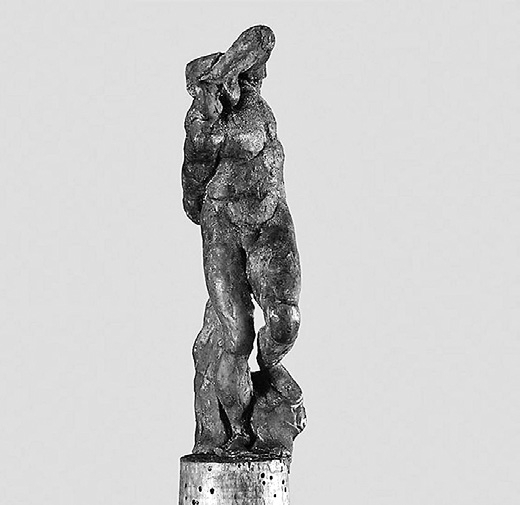
A SMALL wax statue may have brought us closer than ever to Michelangelo, after museum experts found what they believe to be the Renaissance master’s fingerprint — or thumbprint — pressed into the material. Specialists at London’s Victoria & Albert Museum (V&A) discovered the mark on a dark red figurine, which was an initial sketch model for a larger unfinished marble sculpture. The 500-year-old waxwork, titled “A Slave,” was part of Michelangelo’s preparations for Pope Julius II’s elaborate tomb in Rome. It depicts a young naked figure with its arm thrown across its face. According to a museum listing, the proposed statue was among over 40 life-size figures once being planned for the pope’s final resting place. Michelangelo started work on a larger marble version, dubbed “Young Slave,” though he did not complete the work. Plans for the pope’s tomb were later “greatly reduced,” the V&A wrote. Details of the discovery will feature in a forthcoming episode of the BBC documentary series “Secrets of the Museum,” which follows specialists working at the V&A. The episode is set to air in the U.K. today. “It is an exciting prospect that one of Michelangelo’s prints could have survived in the wax,” one of the V&A’s senior curators, Peta Motture, is quoted as saying in a BBC press release. “Such marks would suggest the physical presence of the creative process of an artist.” Michelangelo is known to have destroyed many of his preparatory works, meaning the wax model offers rare insight into his early processes. Potture called it an example of “where mind and hand somehow come together,” adding: “A fingerprint would be a direct connection with the artist.” In his 16th-century biography, “Life of Michelangelo,” the painter Giorgio Vasari detailed how the Renaissance master used wax models to produce large statues. Vasari, a friend of Michelangelo’s, wrote that the artist would submerge the models in water and then slowly lift them out as he carved the corresponding details onto full-size marble works, according to the V&A. Less than 7 inches (17.8 cm) tall, the wax sketch model is believed to have been created between 1516 and 1519, more than 10 years after Pope Julius II’s tomb was first commissioned. The eventual design for “Young Slave,” which is now housed in the Accademia Gallery in Florence, differs from the early wax model in several ways, suggesting that Michelangelo “refined the design at a later stage,” the V&A wrote. (SD-Agencies) | 
